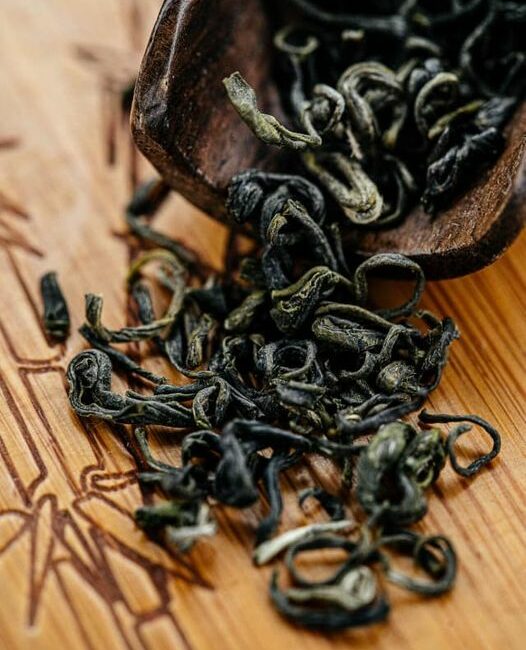Chinese green tea and its practice
In China, the diversity of green teas is phenomenal, even disconcerting. Centuries of cultivation have made it possible to diversify its aromatic palette. From the bitterness of small twisted leaves to the sweet scent of exceptional leaves, green tea comes in more than a thousand varieties.
Sold in the street, in bulk or in luxurious packaging, drunk by peasants and government officials alike, tea has been part of the daily life of the Chinese for ages and remains the most consumed beverage in this country. For us who explore new green tea producing regions every year, China is an inexhaustible source of discoveries. Each region has its own specialty and each craftsman its own method. The grands crus are numerous and legendary. Bi Luo Chun, Long Jing Shi Feng, Tai Ping Hou Kui – these are teas with a rich and long history.
The Chinese are proud of it and the demand for exceptional green teas is growing. Research centers are founded to develop new cultivation techniques. Mountains are cleared to increase the area of gardens. Many green teas from new cultivars, such as Anji Bai Cha or Jingning Bai Cha, are appearing. Production increases every year and interest in these new vintages is undeniable. Green tea, in China, is extraordinarily alive.
THE CHINESE PRACTICE OF GREEN TEA
In the huge railway stations in China, hot water tanks are made available to travelers who can easily and free of charge fill their tea bottles and huge thermos flasks. In addition to demonstrating the extent to which tea is integrated into Chinese mores, this cultural particularity also reveals that, in everyday life, the Chinese pay little attention to the preparation of green tea. A few leaves in a glass or bottle, boiling water poured directly over them, and several infusions will take place throughout the day.
The origins of this “easy” approach can be traced back to Buddhist and Taoist monks, who were the first to cultivate and consume tea for its stimulating properties. Quite naturally, the act of drinking the tea harmonized with the spirit of humility and calm proper to meditation. Without necessarily granting tea its own spiritual value, the monks nevertheless discovered that this ritual could promote the sharing of the values of peace, tranquility, pleasure and truth.
We can find today, in the Chinese practice of tea , similar feelings. Drinking tea, for any Chinese lover, is naturally associated with the feelings of spontaneity and natural carelessness inherent in the Tao spirit. Therefore, we do not find a ceremony as codified as the Japanese ceremony can be.
That said, there is still a more developed tea practice in this country.
Chinese Tea Houses and Shops
In Chinese teahouses, for example, the art of serving tea continues to play an important social role. In tea shops, one person is often responsible for preparing the drink. With studied and fluid movements, the infusions are made with the greatest care.
Many tea making competitions are held every year during festivals or special events. The participants, almost exclusively women, are judged on the grace of their gestures, the attitude, the beauty and the refinement of their presentation. These competitions usually include two practices, the « Gong fu cha » and the « gaiwan » infusion commonly used by amateurs.

